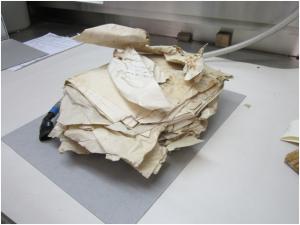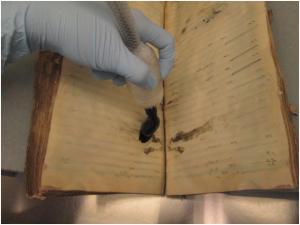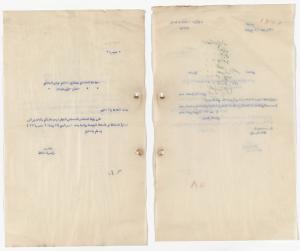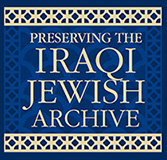You are now leaving the National Archives Website
Click the link below to continue or wait 10 seconds to be transferred to:
https://www.facebook.com/NARACAST
Thank you for visiting the National Archives online!
We have provided a link to this site because it has information that may interest you. This link is not an endorsement by the National Archives of the opinions, products, or services presented on this site, or any sites linked to it. The National Archives is not responsible for the legality or accuracy of information on this site, the policies, or for any costs incurred while using this site.
You are now leaving the National Archives Website
Click the link below to continue or wait 10 seconds to be transferred to:
http://twitter.com/usnatarchives
Thank you for visiting the National Archives online!
We have provided a link to this site because it has information that may interest you. This link is not an endorsement by the National Archives of the opinions, products, or services presented on this site, or any sites linked to it. The National Archives is not responsible for the legality or accuracy of information on this site, the policies, or for any costs incurred while using this site.
Conservation, Imaging, and Access
Completing the Iraqi Jewish Archive Preservation Project
The third and final phase of the Iraqi Jewish Archive Preservation Project (Phase 3) was funded in 2011 by the Department of State with $2.98 million to achieve the following goals:
- Cataloging: Complete cataloging of the collection and refine the database information.
- Conservation: Provide conservation treatment to complete stabilization and allow for safe handling during digitization, and, as needed, more extensive treatment for selected items to permit exhibition.
- Digitization: Image all documents and selected books, and develop associated metadata.
- Exhibition: Create an exhibit in English and Arabic to be shown at the National Archives in Washington, DC, and in Iraq. The exhibition Discovery and Recovery: Preserving Iraqi Jewish Heritage provides a fascinating window on the books and documents in the collection; the work to preserve them; and the long, vibrant history of the Iraqi Jewish community.
- Access: Create a web site to provide access to the database that documents the entire contents of the Iraqi Jewish Archive that will be completed mid-2014.
- Fellowships: Provide fellowships for Iraqi conservation professionals to assist in preserving the collection, and to support long-term care of the Iraqi Jewish Archive.
- Safe Transport: Box, crate, and return the materials to Iraq. Custom boxes for each book, made with a computer-driven box-making machine, will help contain any residual debris, and, equally important for the mold-damaged materials, provide an environmental buffer against fluctuating temperature and relative humidity. Boxing individual books will protect them during transport to Iraq and enhance long-term storage and access.
Project Staffing
The Department of State funding enabled the National Archives to hire an excellent team of 10 full-time staff to execute the final phase over a two- to three-year period, ending in 2014:
- A project manager who managed the day-to-day project and its many parts.
- Conservation staff: Two conservators and two conservation technicians who did conservation work and provided custom housings.
- A Hebraic librarian who developed cataloging information, integrated work done by part-time staff with Arabic language expertise, and provided assistance and guidance in developing item-level priorities and creating metadata.
- Preservation imaging staff: Two imaging specialists and three imaging technicians who selected digitization equipment, developed efficient work flows and protocols appropriate to project goals, and carried out the digitization and the technical quality control.
Several National Archives staff have provided ongoing oversight, direction, and support throughout the project.
 Enlarge Video Clip: Behind The Scenes - Conservation Lab
Enlarge Video Clip: Behind The Scenes - Conservation Lab
Phase 3 of the IJA Preservation Project was carried out during the period January 2012 through June 2014. A team of conservators and conservator technicians was hired to carry out the work necessary to prepare materials for digitization, exhibition, and ultimately for safe transport back to Iraq.
Though minimal cleaning had been done in Phase 2 of the project, the majority of the collection still had extensive dormant mold. To confine the dirt and mold, and to protect staff, each IJA item was opened in a fume hood and examined to assess its treatment needs and to capture any additional bibliographic information that could be revealed.
 EnlargeWater-damaged archival records were often distorted and required careful handling to permit assessment and further treatment
EnlargeWater-damaged archival records were often distorted and required careful handling to permit assessment and further treatment
 EnlargeWorking in a fume hood, materials selected for digitization were thoroughly cleaned using a HEPA-filtered vacuum and small brushes
EnlargeWorking in a fume hood, materials selected for digitization were thoroughly cleaned using a HEPA-filtered vacuum and small brushes
All books and documents that were digitized were vacuumed to permit safe handing for the next steps in the project: conservation treatment, digitization, and exhibition of selected materials. During the cleaning process, pages that were adhered together were mechanically separated. Attachments, such as revenue stamps, that had floated off during the flood were re-attached in their original locations when there was evidence to permit that; otherwise such items were placed in polyester sleeves and kept in their original file locations.
 EnlargeBooks posed treatment challenges given the condition of text pages and the wide variety of binding structures present in the collection
EnlargeBooks posed treatment challenges given the condition of text pages and the wide variety of binding structures present in the collection
 EnlargeGiven their vulnerability to water, many photographs attached to school records fared poorly in the flood
EnlargeGiven their vulnerability to water, many photographs attached to school records fared poorly in the flood
Following mold remediation, the primary goal of conservation was to stabilize materials to permit safe handling during imaging and to digitally capture as much information as possible. Tears and losses that extended into text or that caused structural weakness were mended or filled using conservation-quality long-fibered papers and stable adhesives. To eliminate harsh contrast between mends and book and document pages, mends were color toned to appear less starkly white and more neutral.
Book leaves were treated following the same treatment protocols as loose archival documents. Except for books included in the exhibit, damaged book covers and binding structures were not repaired. To permit imaging of tightly bound volumes, sewing threads were sparingly cut or loosened to permit books to open more fully while retaining bound structures.
 EnlargeTo correct distortion, crumpled archival documents and book leaves were flattened, either dry under weight or with minimal moisture, to achieve a flat plane for imaging. Any items that could withstand being flattened under glass during photography were not flattened in the conservation lab
EnlargeTo correct distortion, crumpled archival documents and book leaves were flattened, either dry under weight or with minimal moisture, to achieve a flat plane for imaging. Any items that could withstand being flattened under glass during photography were not flattened in the conservation lab
Treatment protocols were devised for separating photographs when they had adhered to adjacent pages, as well as reattaching them back in original position when that was possible. While some photographs are legible and contain visual information, others were so badly damaged that their content washed away along with the image-bearing emulsion layers.
Collection items that were selected for exhibition received more extensive treatment than items that were only digitized. This was done to assure the safety and stability of materials during display, as well as to maximize the viewing experience of visitors to the exhibit. As needed, materials were surface cleaned and mended. Some items were bathed in successive water baths to remove tide lines and staining that resulted from the flood. This treatment step greatly improved the appearance of the materials and also enhanced legibility between the text and background paper. Efforts were made to retain original formats. Thus, a few books were rebound following accepted book conservation practice, while corners, spines and hinges were repaired on bindings that were intact or more significant.
 EnlargeWashing these book leaves removed dirt, stains, and paper-decomposition products, as evidenced by the resulting brownish bath water
EnlargeWashing these book leaves removed dirt, stains, and paper-decomposition products, as evidenced by the resulting brownish bath water
 EnlargeCustom boxes provide protection during storage and handling. Each item is labeled with its title and IJA number to permit easy access
EnlargeCustom boxes provide protection during storage and handling. Each item is labeled with its title and IJA number to permit easy access
Collection items that were not selected for digitization were evaluated in a fume hood to permit capture of any additional bibliographic information that could be revealed. Materials were also examined for the presence of annotations, which when they were found were photographed and added to the database entry for that item. Thus, all unique aspects were captured of imprints that otherwise are readily available in libraries or in online collections. Materials not selected for digitization were not mold remediated, but all were placed in preservation quality housings or custom made boxes.
The handling, treatment, and housing protocols employed to preserve the Iraqi Jewish Archive can be referenced from this site.
 Enlarge
Video Clip: Behind The Scenes - Imaging Lab
Enlarge
Video Clip: Behind The Scenes - Imaging Lab
To digitize books and documents in the Iraqi Jewish Archive, state-of-the-art overhead camera sets, specifically designed for imaging in cultural heritage applications, were used. Overhead cameras were selected over flatbed scanners because they ensure safer handling of materials and enable greater productivity. Depending on the size and condition of the originals, technicians can capture between 600 and 1,200 images a day with these cameras. Images are displayed on a computer screen attached to the camera, allowing focus and exposure to be adjusted rapidly when required.
 EnlargeImaging equipment includes a camera, lighting, and a computer as well as a heavy-duty copy stand to dampen any vibrations that would affect image sharpness
EnlargeImaging equipment includes a camera, lighting, and a computer as well as a heavy-duty copy stand to dampen any vibrations that would affect image sharpness
 EnlargeThe shutter is triggered by foot pedals, freeing the technician’s hands for two-handed positioning of documents and books
EnlargeThe shutter is triggered by foot pedals, freeing the technician’s hands for two-handed positioning of documents and books
 EnlargeThe camera back (seen here from above) contains a 40-megapixel sensor.
EnlargeThe camera back (seen here from above) contains a 40-megapixel sensor.
 EnlargeThe gray cards in the technician’s hand are spacers that help him finely- tune cradle pressure
EnlargeThe gray cards in the technician’s hand are spacers that help him finely- tune cradle pressure
We take great care to minimize the risk of damage to originals. The majority of the items are photographed while held flat inside a glass-topped book cradle. Technicians precisely control the amount of pressure exerted on the paper when the glass is closed. While some of the books are in suitable condition for the book cradle, others cannot be laid flat without damaging the bindings. For these items, custom supports maintain a book in a partially opened position, which allows safe imaging of the book, one page at a time, outside of the glass cradle.
 EnlargeThe white band is restraining the side of the book not currently being imaged
EnlargeThe white band is restraining the side of the book not currently being imaged
 EnlargeReviewing Iraqi Jewish Archive items prior to photography
EnlargeReviewing Iraqi Jewish Archive items prior to photography
Imaging specialists identify the best shooting approaches; then lab technicians actually take the pictures and assess image quality. After entering in a custody log each item brought into the imaging suite, specialists review the materials to determine the best shooting methods, pass along special instructions, and recommend technical settings. This leg-work saves the technicians’ time and keeps them busy with their primary task, taking pictures.
 EnlargeTechnicians inspect each shot for correct focus, color fidelity, and exposure
EnlargeTechnicians inspect each shot for correct focus, color fidelity, and exposure
 EnlargeThis 114-megabyte TIFF master file will be used to create a web-ready PDF file
EnlargeThis 114-megabyte TIFF master file will be used to create a web-ready PDF file
Positioned within the picture is a quality-control target—a color bar; it will be cropped from the web-site image that will be accessible to the public.
 EnlargeA disk subsystem with 20 terabytes is being configured for additional storage capacity
EnlargeA disk subsystem with 20 terabytes is being configured for additional storage capacity
After inspection, related images are assembled into multipage PDF files to create public access versions accessible on the web site. Files are verified to ensure that all pages of the original item were imaged and are in the correct sequence. A master file in TIFF format is retained for each image capture. With an estimated 240,000 document sides and book pages to be imaged by the project’s completion in June 2014, a robust IT infrastructure is necessary—with ample storage and a high-performance server to enable fast networking.
In photographing these materials, our primary goal was to share highly legible images via a user-friendly web-site interface. A large portion of the items in the Iraqi Jewish Archive were water damaged, resulting in ink bleeding through pages and into adjacent pages within ring binders. We imaged these pages as “spreads,” two pages side by side—akin to book spreads. This method improves the page flow and provides better context for understanding why transferred ink appears on unrelated pages.
A different shooting approach was used for pages in folders or ring binders, like school records. In this “folder view,” the front and back of each page were shot in sequence until all pages in the folder had been imaged. Further information and guidelines developed for the project are accessible here.
 EnlargeAn example of “spread” photography of ring-binder contents
EnlargeAn example of “spread” photography of ring-binder contents
 EnlargeAn example of “folder view” shots
EnlargeAn example of “folder view” shots
A primary aim of the preservation project has been to ensure that the information in these materials is preserved and accessible worldwide. This has been realized in several ways:
- Cataloging the collection
- Creating an online key word search capability for locating items
- Conservation
- Digitization of the documents and the priority books
- Developing the website dedicated to the Iraqi Jewish Archive; posting the digitized materials online
- Providing the opportunity for the public to add and exchange information pertaining to each entry (until September 2014)
- Exhibiting items from the collection in Discovery and Recovery: Preserving Iraqi Jewish Heritage, and telling the story of the preservation of the collection
- Making the exhibit available online
